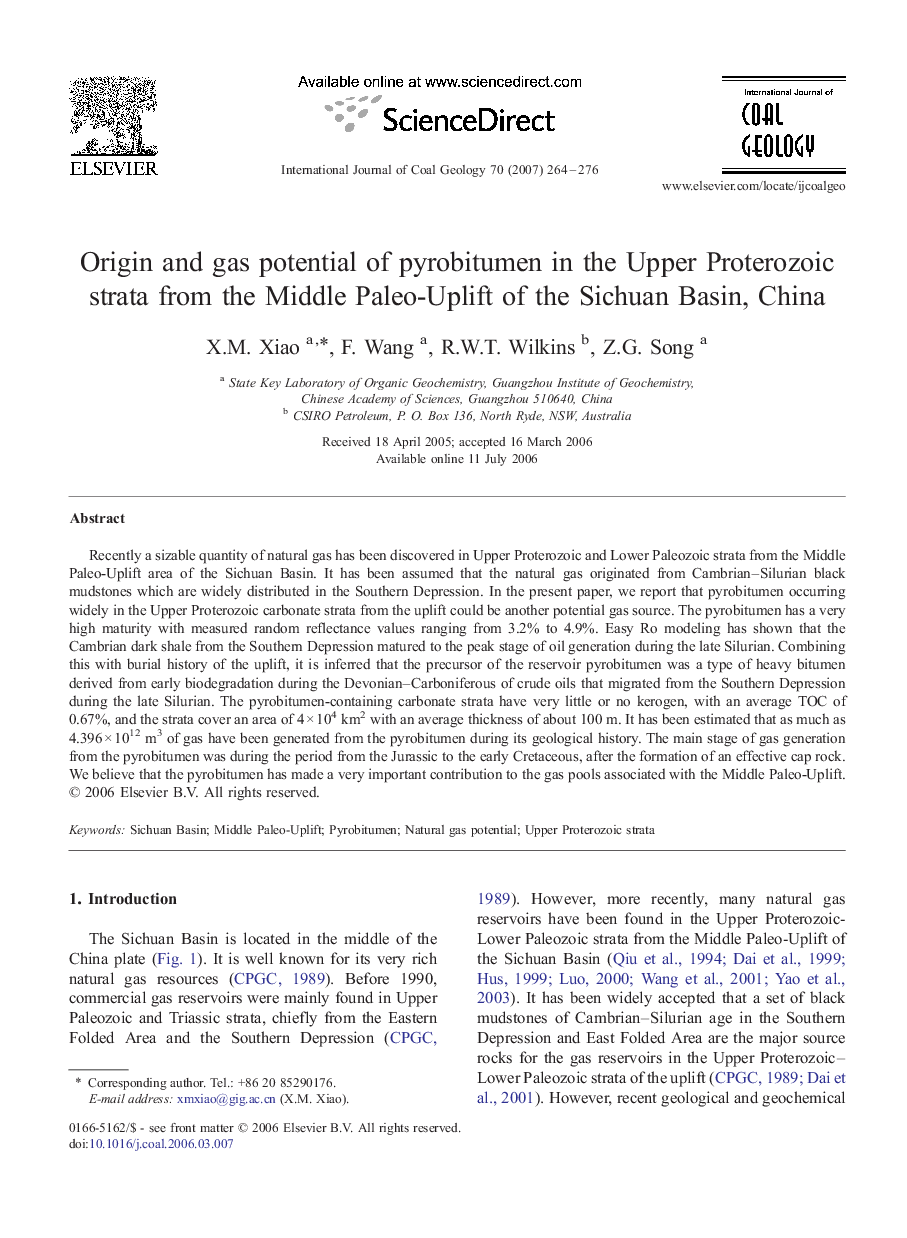| Article ID | Journal | Published Year | Pages | File Type |
|---|---|---|---|---|
| 1754276 | International Journal of Coal Geology | 2007 | 13 Pages |
Abstract
Recently a sizable quantity of natural gas has been discovered in Upper Proterozoic and Lower Paleozoic strata from the Middle Paleo-Uplift area of the Sichuan Basin. It has been assumed that the natural gas originated from Cambrian-Silurian black mudstones which are widely distributed in the Southern Depression. In the present paper, we report that pyrobitumen occurring widely in the Upper Proterozoic carbonate strata from the uplift could be another potential gas source. The pyrobitumen has a very high maturity with measured random reflectance values ranging from 3.2% to 4.9%. Easy Ro modeling has shown that the Cambrian dark shale from the Southern Depression matured to the peak stage of oil generation during the late Silurian. Combining this with burial history of the uplift, it is inferred that the precursor of the reservoir pyrobitumen was a type of heavy bitumen derived from early biodegradation during the Devonian-Carboniferous of crude oils that migrated from the Southern Depression during the late Silurian. The pyrobitumen-containing carbonate strata have very little or no kerogen, with an average TOC of 0.67%, and the strata cover an area of 4Â ÃÂ 104Â km2 with an average thickness of about 100Â m. It has been estimated that as much as 4.396Â ÃÂ 1012Â m3 of gas have been generated from the pyrobitumen during its geological history. The main stage of gas generation from the pyrobitumen was during the period from the Jurassic to the early Cretaceous, after the formation of an effective cap rock. We believe that the pyrobitumen has made a very important contribution to the gas pools associated with the Middle Paleo-Uplift.
Keywords
Related Topics
Physical Sciences and Engineering
Earth and Planetary Sciences
Economic Geology
Authors
X.M. Xiao, F. Wang, R.W.T. Wilkins, Z.G. Song,
